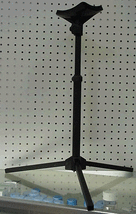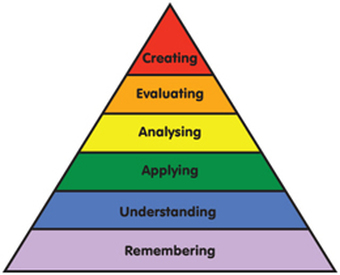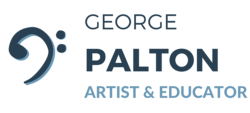 I have spent a significant portion of my teaching career working with marching band low brass sections. In that capacity I am often tasked with transferring students from other instruments to play the tuba. I am frequently asked about the age a student should be started on the tuba and what attributes he or she will need to succeed. WHY? Let’s begin by taking a look at the end goal. You may ask why I would post this blog entry in November when most high schools are wrapping up their marching season? Balance within your instrumentation requires years of preparation and these ratios work for both marching and concert band settings. I strongly believe that a marching band should have about 8 tubas for every 100 wind musicians. The ideal brass section of 50 would consist of 16 trumpets, 10 mellophones, 16 baritone/trombones, and 8 tubas. That is 8 functioning tuba students who are capable of making a positive contribution to your ensemble’s sound. Most band directors advocate a “pyramid” concept of tone and look towards their low brass to support its foundation. However, insufficient instrumentation can make this nearly impossible. In my experience, when the tuba section is short handed the students overcompensate. This produces a less than desirable sound and is ultimately counterproductive. WHEN? I recommend that you start students on the tuba at the earliest possible opportunity. However, there are limitations to consider, mainly the size of the student and availability of suitable instruments. Ideally, a tuba student should start on a 3/4 sized BB flat tuba. Sometimes a 4/4 (full sized) instrument is the only instrument available and the beginner is not tall enough to hold the tuba. A Wenger Tuba Rest or a tuba stand can provide a solution. Keep in mind that proper posture and holding position is vital since they are prerequisites to full breath support. If instruments and/or tuba stands are unavailable consider starting a student on the (bass clef) euphonium as it will provide the most natural transition to the tuba later on. WHO? Anyone who is interested! While it is important to have balance in your instrumentation it is rare to have too many tuba players. It is much more likely that you need to recruit a couple students to transfer to the tuba. It is best to transfer younger students because they will require time, patience, and instruction to develop into a competent tuba player. Furthermore, students improve at varied rates. A blend of veteran student leadership paired with younger developing musicians will sustain the quality of your section. Do not be afraid to include female tuba students. Try to avoid gender stereotyping in your instrumentation. Gender is not a factor in one’s ability to play an instrument. This is evidenced by the high level of musicianship by today’s female tubists! A student’s success on their instrument is largely dependent upon their level of dedication. Playing the tuba is not easy. At its beginning stages it is rarely glamorous. In novice and intermediate ensembles it is mostly used in a supporting role. And yes, it is heavy. Therefore you should look towards your most dedicated student to make this transition. There are some physical and cognitive considerations that should be factored in as well. Sometimes students with braces have a much easier time on the tuba as opposed to other brass instruments. Others have difficulty accelerating their air enough to play in the upper register of a trumpet but the free blowing nature of the tuba suits them well. A good ear is an important asset. You can assess this by signing and mouthpiece buzzing with the student. HOW? Here are some resources for young musicians and a set of guidelines for the first steps. Focus on the basics and reinforce good habits! Mouthpiece buzzing and breathing exercises should be included at every stage of a student's development. Good luck!
0 Comments
I recently conducted an experiment during my personal practice time. I made the decision to power down all of my electronic devices while practicing including my cell phone and computer. I believe that successful practice is predicated upon eliminating distractions so I was hopeful that it would improve my ability to focus. I discovered that I began to practice with more intensity and accomplish more.
Smartphones have permeated every aspect of modern society. Most of us would feel naked without one. I advocate the use of technology in music instruction, its benefits are immeasurable! But we need to know when it is time to power down and tune in to the task at hand. You might be surprised to know the extent that the average person checks their smartphone in a day. If you practice as much as Dan Perantoni suggests (a minimum of three hours a day) and check your phone nine times in an hour you have been distracted a total of 27 times! That is nearly 10,000 interruptions within a calendar year. We practice our instruments to get better, and we play our instruments because it is fun. So it why not devote our full attention in the moment? It happens to almost every college student. You spend your collegiate days counting down to graduation. The day finally arrives and you begin to transition towards your professional career. If you are fortunate (as I am) there are many aspects of your new life that are rewarding. But from time to time you find yourself saying “I wish I was still in college. I don’t want to adult. Do I have to adult??!”
School is something that we are compelled to do from kindergarten through high school. Many students feel that their college education is something that they are required to do as well. College is not a barrier but rather it is an opportunity. Just ask someone that immigrated to the United States or the parent of a first-generation college student. “YOLO” has become the motto to justify various risque behaviors in our college years. OK, I’m not completely innocent either. What our college students must realize is that these years are an opportunity to devote themselves exclusively to their own future. It’s ok to be a little selfish! You will have professional and family responsibilities in a few short years. So take advantage of these opportunities while you have them. It is not all sunshine and roses. You will have your share of Ramen for dinner and sleep deprived nights. And you will miss it when you are older. Recently, I posed the question on Facebook, “What would you do differently?” Responses were varied and insightful. Many articulated the importance of exploring secondary interests. Some stressed the need to have a “plan B” while others encouraged students to follow their own path regardless of popular opinion or current trends. One individual would have implemented better time management skills while another regrets skipping classes that she paid for. Conducting, secondary instruments, guitar, aural skills, slow practice, and study abroad were all topics of interest. Personally, I would have devoted more time to secondary interests, even if it took me longer to graduate. As I grow older I find myself very interested into the business, marketing, and management side of the arts. Another year to practice couldn’t have hurt while giving me the chance to “stop and smell the roses” on occasion. I was always focused on the end goal and I could have enjoyed the journey a bit more. Regardless, it was a great time of personal growth and I owe so much to my mentors, family, and friends for everything I gained in those formative years. Thank you to everyone who participated! Please respond below if you wish to add to the discussion. Happy #TubaTuesday! Happy #TubaTuesday! I just completed significant revisions to my website's resources, particularly in the areas on Pedagogical Resources, Group Exercises, and For Young Musicians. I have also added several new resources including Sight-Reading Examples and Chorales.
As always please contact me if you have any suggestions for improvement. Happy practicing!  Bloom's Taxonomy Bloom's Taxonomy If you are reading my blog then you probably have a favorable opinion of music education and strong feelings about the constant threat of its extinction. Countless articles have been written in support of music education but I believe something might be missing from the discussion. One supporting argument is discuss the impact of music education on cognitive development and academic achievement. Recently, this author took a completely different yet equally valid approach. Music is after all an intangible and universal part of the human experience. While these arguments have merit I would like to introduce a new viewpoint inspired by "Myth Busters" star Adam Savage. Ultimately, public education exists to serve society in part through its contribution to the economy. For our economy to survive we have to be able to create new products that haven't even been fathomed yet. Meanwhile, schools often structure their curriculum around standardized testing. And there is the dilemma, we educate our students to regurgitate despite the fact that we will need them to posses higher levels of thinking in their adult lives. That is where music education can save the day. It fosters creativity, critical thinking, and serves as a "glue" to bond together life inside and outside the classroom. Do we want our students to store facts in a bucket, isolated from one another? Or do wish from them to truly posses knowledge? Instead, the goal of education is to produce well-rounded and productive citizens and music education is an irreplaceable means to that end. "If you practice, you get better. You have a new piece of music to prepare. Where should you begin? It is important to realize that proper fundamentals are a pre-requisite to efficient music learning. When challenged with a new piece of music students are often consumed with fingerings and rhythms at the expense of fundamentals. But if you are not breathing effectively it hardly matters which valve combination is being used. That notwithstanding, efficient music learning can be broken down into three simple steps: 1) The Basics: Pitches and Rhythm, 2) Survival: Time and Air, and 3) Music Making: Expressive Devices, Terminology, and Style. Learning pitches and rhythm is the most frequent starting point when practicing a new piece of literature. When working on the basics, slow practice is a must! Once the tempo is adequately reduced, deconstruct the music to focus on specific variables that are of concern. If a passage is in an uncomfortable octave transpose it up or down as needed. If the rhythm is difficult clap it, play it on one note, write the rhythms below, or draw lines above the strong beats. If the fingerings are challenging, practice them alone with a metronome. The rhythm of the valves should resemble the music. If the pitches are challenging, first start by playing them on a piano. Then sing the pitches and buzz them on your mouthpiece. Once this is mastered, play it on your instrument. If you can hear a phrase, you most likely are able to play it. If the articulations are difficult, practice saying them on your preferred syllable such as “toh” or “doh.” Try “wind patterning” first away from the horn, then through the instrument without valves, and then add the valves. Eliminate the tongue all together and practice a passage slurred. Start by listing the skills necessary to master a passage, conquer them one by one, and then assimilate these elements into the piece. Once a phrase is successfully learned, repetition is important for retention. Typically three successful repetitions at a particular tempo are sufficient to increase the speed gradually. From there, phrases can be expanded into sections by chunking them together. As you continue to learn the piece do not always start from the beginning. Make sure every measure is equally polished and to give special attention to the more tricky spots. This can be accomplished by working backwards section by section. The next step in successfully learning a piece of music is Survival: Time and Air. A metronome is vital even beyond the preliminary stages of practice since it can become habit to add time when breathing. The breath must be taken from then end of a note so that subsequent notes may begin on time. In addition, all of these breaths must be planned, marked in the part, and practiced. The purpose is two fold: not only must the musician survive the phrase with a characteristic tone, but the breath must be taken in a location that is musically tasteful. Lack of breath support causes more errors than any other factor. Therefore eliminating this variable will reduce mistakes. "The worst thing you can do with dynamics is nothing." Roger Bobo Lastly, we will discuss Music Making: Expressive Devices, Terminology, and Style. I must first give credit to Dr. Skip Gray for sharing these concepts with me. We have three basic devices for expression on our instruments, the modification of dynamics, time, and articulation. Music can be given character and excitement through the use of crescendo and decrescendo, acceleration and rallentando, and by manipulating the attack and length of a note. These tools should be used to capture and communicate the spirit of the music and tell its story. All musical moments are not all created equal, thus the largest of gestures should be saved for the most significant moments. The musician should strive to create contrast with nuance, grandiose gestures, and everything in between.
The ability to demonstrate musical expression is one that must also be developed over time. In constructing a musical plan start by playing the ink in regards to all of the expressive markings and terminology. Should a term find its way into your music that you do not know, look it up. Don’t forget, you probably have a computer in your pocket! When in doubt, Google unfamiliar terminology! Next, analyze the theoretical syntax as a means to determine where important moments exist. These occasions are often framed by a tension and release which must be communicated to an audience. This can occur on a small scale, such as cadences within a phrase. Tension and release also occurs on a large scale, most often through the departure, manipulation, and triumphant return of the primary tonal and thematic material. It is crucial to listen to other musicians in order to emulate these techniques and to absorb its characteristic style. Often musical expression can be trial and error, but when that moment of genius strikes, mark your music and make a plan! Finally, be sure to exaggerate every gesture. It may seem like you are “overdoing it” but given the low frequencies of our instruments and the physical space in between the performer and audience, it is necessary to clearly dictate your musical concepts. While these methods can be tedious they are successful. We have all had experiences that have inspired us to make sacrifices for our art. And while such a methodical approach to practice may seem in contradiction to these inspirations they can help the individual make music to the best of their ability. Do not just work hard, work smart. You will make mistakes along the way. We all do! With an organized approach to practice the individual can reach their goals efficiently and turn their talent into ability. I am very excited to offer this website as a means to share my music and resources with the online community. Its recent updates are designed to connect us better than ever before.
Recent improvements include:
This site was developed in a partnership with Matt Stultz of Together We Can Marketing. His collaborations are many and include composer Samuel R. Hazo and the Washington Symphony. If you are looking to improve your own online presence I highly recommend that you contact him! I would like to encourage my visitors to contact me to offer any suggestions for improvement or to simply to say hello! I will look forward to meeting you whether it be in person or from afar. Cheers! Many states have already released their audition repertoire and others will shortly. Regardless it is important to realize that your preparation starts TODAY! Students who practice regularly tend to win auditions over those who wait until an audition is approaching. It is important to remember that you will be evaluated on your command of the instrument and the required materials. I have worked with many students who have successfully auditioned for their All-State Band. I have also been the person on the other side of the curtain. Through my experiences I have developed a list of suggestions that I believe will help your endeavor.
My inaugural blog posting was inspired by Jeff Beal’s recent article “Is Someone You Love Going to College? Their Success Depends on Three Words.” His valuable insights caused me to ponder how these suggestions could be applied to the freshman music major. As I enter year #11 of college teaching here is the best advice that I have to offer.
You have arrived to college. Now what? Remember, you are never alone in the journey that is ahead. You will have many resources at your disposal in order to make the journey a fruitful endeavor. Applied lessons are an integral part of your training as a future musician and educator. These guidelines are intended to provide strategies towards an easy, fun, and productive transition. Success in college can be simplified into three components:
|
Archives
October 2021
Categories |

 RSS Feed
RSS Feed